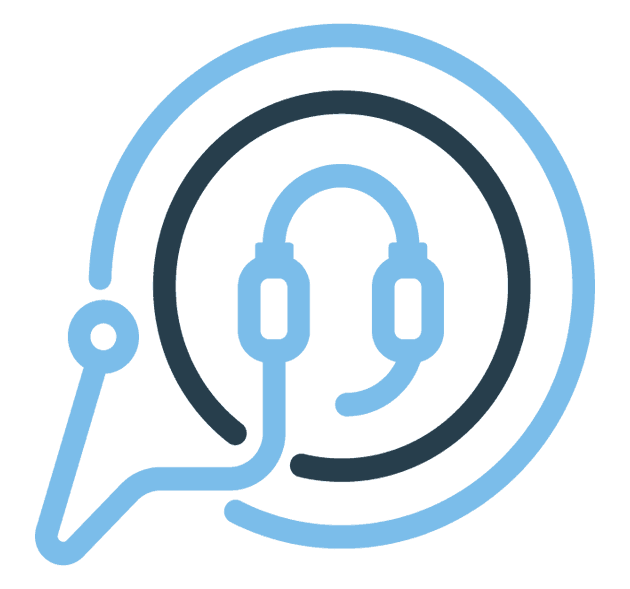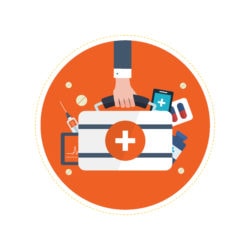Healthcare staff are fundamental to high-quality patient care and, during the pandemic, they have gone above and beyond their call of duty to care for the sick. But just as we need them the most, as hospitals and doctors work to contain new strains of the virus and the anticipated holiday surge, there is a shortage of nurses and other healthcare workers.
Medical workers are retiring, opting for early retirement, or dropping out of healthcare to pursue different career paths. And the shortage is expected to get worse before it gets better. We know that a significant segment of the workforce is nearing retirement, while enrollment in nursing and other training programs is dwindling. It’s also expected to have a cyclical effect; as the medical workforce gets smaller and smaller, they are also spread thinner and more likely to be overworked, which can lead to even more personnel getting burnout and quitting.
The coronavirus pandemic exacerbated a problem that was already brewing in the medical field. With the aging Baby Boomer generation, increasing demand for medical services, home care, and Hospice and limited supply was expected to come to a head soon. Studies had predicted significant staffing shortages of in-home health aides, nurses, and medical lab technicians by 2025 and a scarcity of qualified physicians by 2030.
“We’re not prepared for what’s coming. Our concern is that the demand is going to outstrip the supply unless we see some dynamic changes occur.”
– William Dombi, president of the National Association for Home Care & Hospice
Industry experts say personnel feel overworked and exhausted at this point; fatigue and burnout are palpable. Low pay, long hours, and grueling shifts were already pain points for healthcare workers.
How Can Healthcare Organizations Work Around Staffing Shortages?
Now, as the need for healthcare is greater than ever, demand is only expected to increase, healthcare organizations need to address labor shortages in their continuity strategy.
Outsource to Qualified Service Providers
Outsourcing alleviates the pressure on overworked healthcare staff, freeing their time for more critical tasks. Plus, healthcare outsourcing can be a cost-effective solution to labor shortages. Hiring and training new staff can be a hefty financial burden for many healthcare organizations, especially amidst the current financial strains in the medical industry. Relying on a third-party service provider eradicates the need for recruitment, training, and other associated expenses, making it an economically viable alternative.
For example, transferring this responsibility to a dedicated service provider means nurses and medical practitioners can concentrate more on providing patient care, thereby increasing overall operation efficiency and service quality. That’s why outsourcing to a service provider specializing in medical call handling ensures that patient questions and requests are managed in a timely manner. Healthcare call center service providers are trained to handle different types of calls, ranging from appointment scheduling to emergency situations, in the most professional and responsive manner. Finally, outsourcing can offer round-the-clock service, ensuring that patient calls are answered promptly, even outside typical office hours. This 24/7 service enhances the overall patient experience and signifies the healthcare organization’s commitment to comprehensive patient care, regardless of the time or day.
Utilize the Resources Available
This is an important time for healthcare management to be aware of the resources that are available to help address staffing shortages, according to the CDC. Local healthcare coalitions, federal, state, and local public health partners may provide assistance when hiring additional healthcare personnel, recruiting retired doctors, or finding students and volunteers as needed.
Related article: How to Prevent Burnout Among Healthcare Staff.
Plan for Flexible Staffing
The problem of labor shortages in healthcare isn’t new, but the pandemic has accelerated the need for hospitals and nursing homes to be proactive. The first step is to really look at how things are organized and reassess your staffing needs
Your team should identify the gaps and look creatively at how the current workforce may be reorganized to cover some of those needs. Efficient staffing means understanding the needs of your facility and deploying the minimum number of healthcare personnel needed to provide a safe work environment and good patient care.
For example, relying on underutilized, lower-level staff to handle simpler tasks in order to free up senior nurses and PAs for more complicated cases is a better way to optimize team members’ skill sets. Another option is to focus on upskilling current staff and new entries. Internal training programs and mentorships can help pass on valuable experience from seasoned employees before they retire to help cover their needs. Cross-training can also ensure that employees are flexible enough to fill critical gaps as they occur.
Lean Into Technology
As we move forward, successful healthcare networks are going to be those that are willing to implement innovative workforce practices and become early adopters of new tools. Technology in healthcare is designed to increase efficiency, accuracy, and employee satisfaction. And this is precisely in line with current pressures on hospitals, clinics, and nursing homes to improve efficiency and patient outcomes.
Utilizing technology helps decrease costs, increase efficiency, and free up valuable staff so that they can focus their time and effort on patient care. Plus, government incentives are offered to qualifying facilities – with the proper technical training and IT infrastructure in place – that adopt electronic medical record systems and other digital options.
Technologies that are being adopted in the healthcare field in record numbers, include:
- Telemedicine platforms,
- Remote home monitoring,
- Secure cloud tools for collecting and sharing data, and
- EMR integrations.
Over the past year, more healthcare systems have begun using telehealth services in response to the public health emergency than ever before. Now, we expect HIPAA regulations to be expanded in order to support the still-growing adoption of virtual and remote health platforms. Along with the wider acceptance of credentialing by proxy, this tech boom is set to ease workforce shortages. It expands the geography of the talent pool so that specialists can reach more patients, in less time, across state borders.
Additionally, better integration development will make it easier for healthcare facilities to outsource services. Streamlined EMR integrations will facilitate fast and secure sharing of patient data, when needed, for tasks like insurance billing, prescription services, teletriage, telehealth call center answering services and after-hours answering for medical practices. This type of secure, integrated technology enables healthcare providers to take advantage of the time and cost savings associated with outsourcing work.
5 High-Tech Ways to Augment Healthcare Staff
With all of these factors combined, it’s clear that the labor shortage in healthcare isn’t going away anytime soon. So, administrators and managers are looking for ways to support their current staff and make activities more efficient. And this is where the power of technology can really make a difference.
Let’s look at some of the high-tech solutions that can help medical practices and hospitals alike to survive the labor shortage crunch.
- Speech-to-Text Apps – Medical staff are currently drowning in paperwork. Although documentation is a necessary part of healthcare, it’s not the best use of time for busy practitioners who should be focusing on treating patients. Voice detection and transcription can speed up the process of completing charts and updating electronic patient records. Transcription technology has come a long way; now, the average voice recognition app boasts a 75 – 85% accuracy rate. Plus, AI developers like Suki, Nuance, and Ubiqus have created apps specifically for the healthcare industry. The goal is to leverage automated speech-to-text technology so that healthcare professionals can spend less time on administrative tasks and routine communication.
- Voice Assistants – These hands-free devices can quickly be deployed at scale for large medical offices, clinics and hospitals. Using drop-in features, especially when combined with a two-way video monitor, practitioners can check up on patients from their office or nurses’ station. When staff is limited and time is valuable, this can be a huge help for healthcare providers. Patients can make requests and request information directly through Alexa or Google Home Assistant, saving staffers a trip to each individual room when help is requested. It also decreases in-person interactions with potentially contagious patients and save on the amount of PPE consumed in a day. At the same time, this helps patients feel better connected with care providers and more informed about their treatment plan.
- Telemedicine – can help to ease the burden on medical staff by enabling patients to be diagnosed and get checkups for long-term care remotely. This technology not only reduces the number of patients in the waiting room, but it also reduces the average appointment time, allowing physicians and nurses to see more patients in the same time period. This agile solution has made it possible for countless practitioners to work from home or anywhere they have Internet access. Plus, it allows ambulatory staff members to coordinate medical information with specialists in other locations, which can help to provide the best possible care for patients.
- Portable Patient Monitoring Devices – Portable monitors are being used in the hospital setting to monitor patients while they are on the go. These portable continuous monitoring devices, can be easily moved from patient to patient and let nurses and doctors keep track of vital signs like ECG, respiratory rates, and oxygen saturation levels. This critical data is captured and sent back to a central monitor and the integrated EMR system, and caregivers are alerted directly if the vital signs indicate an emergency.
- Queue Management Systems – When staff is stretched thin, getting patients in and out of the doctor’s office, clinic, or hospital at an efficient rate becomes even more difficult. Appointment scheduling and queueing technology work to decrease patient wait times and keep appointments running on time. It uses machine learning to predict high-traffic times and real-time data from both staff and patients to optimize everyone’s time. For example, patients are notified automatically when appointments are behind schedule or they can push their appointment back when they are running late, making room for other activities. Software developers like QLess, Qmatic, and Qminder have created solutions with healthcare workflows and patient scheduling in mind.
Related article: Discover Why More Healthcare Practices Rely on Call Center Outsourcing.
Boost the Employee Retention Rate
One main cause of shortages is the massive turnover seen in the healthcare industry. In 2020, the healthcare industry experienced a nearly 22% turnover rate across all jobs, which represents the second worst rate by industry.
Employee retention is an important issue to address. Proactive management is implementing reward systems for performance, better platforms for communication, more thoughtful shift- planning, and clearer scheduling. Strategies should aim to retain existing personnel, attract recent graduates, and encourage skilled staff to stay on even as they near retirement.
Get Students Involved
Hospitals and healthcare networks should collaborate with universities to facilitate the transition of students into the workforce. If students meet up-to-date certification requirements, learn about the latest work models, and get familiar with the technology actually used in medical care, they will be much better equipped to start working upon graduation.
Streamlining this transition will help ease staffing shortages by better preparing medical professionals and encouraging more students to enter the field.
Related article: How Medical Answering Services Save Your Practice Money.
Augment Your Staff with PatientCalls
Handling incoming calls can be time-consuming, especially when the volume is high. With the roaring tide of staffing challenges, one practical solution that has proven effective for many healthcare organizations is to outsource call answering to a HIPAA-compliant service provider. This strategy not only tackles staffing shortages but also brings a host of other benefits worth considering.
With full EMR integration and HIPAA compliance for data security and patient privacy, PatientCalls is the leading medical answering service in the United States. We continue to support physicians’ offices and medical clinics to operate at full capacity despite the staffing challenges. Medical answering services are a cost-effective solution to labor shortages and an easy way to lighten the workload for vital administrative staff.
Overall, outsourcing call answering to a HIPAA-compliant service provider presents a practical, cost-effective, and efficient solution to the staffing challenges faced by many healthcare organizations today. It is not just about addressing a short-term need, but a strategic move that aligns with the ever-evolving healthcare industry dynamics. As leaders in healthcare continue to chart their course through these staffing challenges, it is vital to explore solutions like outsourcing that promise not just to plug gaps, but to transform challenges into opportunities for enhanced patient experience, staff efficiency and ultimately, better healthcare delivery. Talk with PatientCalls about how we can help your team avoid staffing challenges; contact us using the “get a quote” form above.







